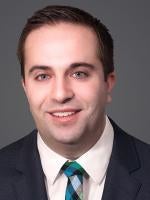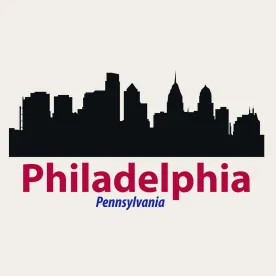On September 17, 2020, six months after Mayor Jim Kenney issued Executive Order 3-20, a Declaration of Emergency Related to the Known and Potential Presence of the Novel Coronavirus COVID-19 in Philadelphia, he signed into law Bill No. 200303, a temporary amendment expanding the City of Philadelphia’s paid sick leave law—officially known as the Promoting Healthy Families and Workplaces Ordinance—to establish public health emergency leave for individuals not covered by the federal Families First Coronavirus Response Act (FFCRA).
Effective immediately, the amendment requires employers and other “hiring entities,” to provide two weeks of “public health emergency leave.”
Who can benefit from the leave?
“Covered individuals” who work in the city for at least 40 hours in one year for one or more “hiring entities” are entitled to the leave.
The amendment defines the term “covered individual” broadly. The definition includes traditional employees, but it also includes a “rebuttable presumption that any individual performing work for a hiring entity is an employee unless the hiring entity can demonstrate … (i) [t]he individual is free from the control and direction of the hiring entity in connection with the performance of the labor or services, both under the contract for performance of the work and in fact; (ii) [t]he individual performs labor or services that are outside the usual course of the hiring entity’s business; [and] (iii) [t]he individual is customarily engaged in an independently established trade, occupation, profession or business of the same nature as that involved in the labor or services performed.”
“Covered individual” also includes: (i) those who perform their work in residences, such as nannies, butlers, housekeepers, cooks, and caretakers for the sick, elderly, or disabled; (ii) individuals “providing services under the participant directed and agency homecare model”; (iii) individuals working “for a food delivery network company” (including drivers); (iv) individuals who work “for a transportation network company” (including drivers); and (v) health care professionals, but only when they indicate that they are available for work and have no obligation to work when they do not indicate availability.
Individuals who are entitled to leave under the FFCRA from a specific hiring entity are not entitled to public health emergency leave from that entity.
What is required?
The amendment requires a hiring entity to provide public health emergency leave to covered individuals “[o]n the date the public health emergency is declared or proclaimed, or on the date of hire for covered individuals hired while the public health emergency is in effect.”
What constitutes a public health emergency?
A “public health emergency” is one that is a “declared or proclaimed emergency related to a public health threat, risk, disaster, or emergency that affects Philadelphia that is made or issued by a federal, state or local official with the authority to make or issue such a declaration or proclamation.”
How much leave must be provided?
A hiring entity must provide public health emergency leave to covered individuals in the following amounts:
“For covered individuals who work 40 hours or more per week for a single hiring entity and are not entitled to leave under the [FFCRA] … from that specific hiring entity …”: the greater of (a) 80 hours or (b) the average hours worked per day over the 6-month period before the public health emergency was declared multiplied by 14 (including hours for any time the employee took leave), up to 112 hours. For (b), if the covered individual did not work over the six-month period, the covered individual’s reasonable expectation at the time of hiring of the average hours may be used.
“For covered individuals who work less than 40 hours per week for a hiring entity and are not entitled to leave under the FFCRA from that specific hiring entity …”: the amount of wages or other compensation the covered individual receives on average in a 14-day period. If compensation varies from week to week, the hiring entity must use an average based on the six months before the public health emergency was declared. If the individual “did not work over such period,” the estimate is determined as “the reasonable expectation of the covered individual at the time of hiring of the average wages or other compensation that the covered individual would normally receive within a typical 14-day period.”
When can public health emergency leave be used?
Covered individuals may use public health emergency leave when unable to work for one or more of the following reasons:
-
they are “subject to a Federal, State, or local quarantine or isolation order related to the public health emergency”;
-
a health care provider advises them to “self-quarantine due to concerns related to the public health emergency”;
-
they are “experiencing symptoms related to the public health emergency and seeking a medical diagnosis”;
-
they are “caring for a covered individual who is subject to an order as described in … (a) or has been advised as described in … (b)”;
-
they are “caring for a child of such covered individual if the school or place of care of the child has been closed, or the childcare provider of such child is unavailable, due to precautions taken in accordance with the public health emergency response”; or
-
they are “experiencing any other substantially similar condition specified by the United States Secretary of Health and Human Services in consultation with the United States Secretary of the Treasury and the United States Secretary of Labor.”
These are generally the same reasons that an employee would be entitled to leave under the FFCRA if it applied, and the amendment is designed to cover employees who are not otherwise able to benefit from FFCRA leave.
The amendment does not require a hiring entity (including any employer who employs a covered individual) to allow a covered individual to use public health emergency leave if the covered individual can reasonably perform work “remotely taking into consideration all relevant circumstances that affect the covered individual’s ability to perform such remote work.”
What if there is a collective bargaining agreement?
The amendment provides as follows:
“All of the provisions … or any part thereof, may be waived in a bona fide collective bargaining agreement, but only if: (a) the waiver is explicitly set forth in such agreement in clear and unmistakable terms; (b) the agreement provides a comparable paid leave benefit; and (c) the agreement is in effect contractually. Unilateral implementation of terms and conditions of employment by either party to a collective bargaining relationship shall not constitute, or be permitted, as a waiver of all or any part of the provisions [of the amendment].”
Noteworthy Points
-
Rate of pay. Public health emergency leave “is compensated at the regular rate of pay … and with the same benefits, including health care benefits, as the covered individual normally earns from the hiring entity at the time the covered individual uses the public health emergency leave.”
-
More generous policy. The amendment does not require “a hiring entity to change existing policies or provide additional paid leave if the hiring entity’s existing policy provides an amount of paid sick leave that satisfies or exceeds the amount of public health emergency leave … and such paid leave can be used for the same purposes and under all of the same conditions as set forth for public health emergency leave.”
-
Replenishing leave. The public health emergency leave accrues immediately and is replenished each time: “(a) a public official declares a new public health emergency based on a different emergency health concern; or (b) a public official declares a second public health emergency for the same emergency health concern more than one month after the first public health emergency has officially ended.”
-
Unused leave. Unless an exception applies (as detailed in the amendment), the hiring entity does not have to reimburse the covered individual for public health emergency leave unused.
-
Job restoration and anti-retaliation. The amendment provides for job restoration and includes protection from retaliation.
-
Use of leave in event of layoff or termination. A covered individual who is laid off or whose employment is otherwise terminated as the result of a public health emergency who chooses not to use all or a portion of his or her public health emergency leave at the time of being laid off or discharged “shall be entitled, if rehired by the same hiring entity within six months of separation, to the same amount [of] public health emergency leave” upon returning to work as the individual was entitled to on the day he or she was laid off or discharged.
-
Increments. The leave may be used in hourly increments or the smallest increment used by the hiring entity’s payroll system.
-
Notice requirements. “Covered individuals shall provide notice to their hiring entity of the need for public health emergency leave as practicable and as soon as feasible, but only when the need for public health emergency leave is foreseeable.”
-
Documentation requirements. A hiring entity is permitted only to request that a covered individual submit a “self-certified statement,” asserting that leave was used according to the purposes for which it is available. “The public statement of a public official shall constitute reasonable documentation for the use of any paid sick time” for one of the purposes under the amendment. “A covered individual need not provide their hiring entity documentation from a public official.”
-
Shift replacement. “A hiring entity may not require, as a condition of providing public health emergency leave for a covered individual that the individual search for or find a replacement to cover the hours during which the covered individual is using public health emergency leave.”
Required Steps for Employers
Of note, all hiring entities must provide covered individuals with a “notice of rights” within 15 days after the amended ordinance becomes law, i.e., by October 2, 2020. If the hiring entity “does not maintain a physical workplace, or a covered individual teleworks or performs work through a web-based platform, the required notification of rights … shall be sent via electronic communication or a conspicuous posting in the web-based platform.”
Expiration of Amendment
The temporary amendment includes a sunset provision providing that the amendment will expire on December 31, 2020. This corresponds with the expiration of the FFCRA.
Regulations
It is expected that regulations will be issued to clarify ambiguities in the amendment.





 />i
/>i

